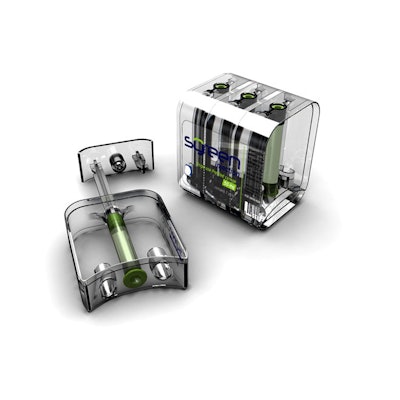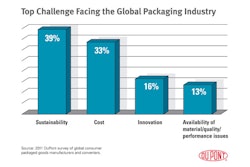
A recent survey by technology design and development firm Cambridge Consultants, in conjunction with MassMEDIC, examined how device usability impacts patient acceptance, dosage compliance, and ultimately health outcomes. Looking at the role lifestyle factors and device features play in patient compliance for drug and device combination products, the research supported the idea that pharmaceutical companies could improve the market share of their drugs if the emphasis was shifted to the broader patient user experience.
Participants in the survey included healthcare providers, which play critical roles in determining a drug’s market success, and more than 240 diabetes patients who used combination products daily, such as injection pens, auto-injectors or insulin pumps. Responses indicated that patient compliance directly influences patient health and drug efficacy, suggesting that delivery device design should be focused on supporting compliance on multiple levels.
Among the key survey findings were the following:
• 77% of patients responded that they would be willing to pay a slight premium (around $5) for more user-friendly devices.
• Patients have a greater choice of devices than ever, and are making informed decisions.
• 75% of patients reported that their doctor gave them a choice of which device to use. Of these, the largest percentage (28%) took their doctor’s recommendation, however a close second (21%) stated they did their own research before selecting a device.
• Of the patients who had later requested a change in their drug delivery devices, lifestyle factors such as discretion (28%) and portability (21%) were by far the biggest catalysts for change.
• 100% of healthcare providers (physicians and nurse educators who either prescribe or train patients to use combination products) questioned believed that the usability of the device impacts patient compliance with the medication therapy. Providers indicated that efficacy of the medication is a primary concern in making treatment decisions, and they may not prescribe a medication if they don’t believe that the patient can be successful with the dosing requirements.
Influence of human factors
The findings challenge traditional medical device industry conceptions about compliance and the patient experience,” said Melanie Turieo, human factors team leader at Cambridge Consultants. “The industry has been good at maximizing drug efficacy but patient experience factors have not really been a primary focus. Only now are we seeing the patient experience take center stage. Drug makers need to realize that if you consider the patient’s broader needs throughout the development process--from conception to design, development, and commercialization--you are likely to have a more successful and effective product, resulting in improved compliance and therefore improved patient outcomes.”
Patient experience was defined as encompassing all aspects of a patient’s interaction and experience with a medical product. This is a holistic approach including elements such as smarter packaging, instructions for use, starter kits, and developing online device or therapy communities. In a time of increased online collaboration, patients have become increasingly aware and proactive in defining their treatment regimens. Online community portals such as patientslikeme, CureTogether, and tudiabetes.org have become increasingly important tools for patients and providers alike to validate or discredit certain drugs or devices.
Package design that wins, and loses
The research underscores the fact that the least-effective treatment is one that is not taken. The efficacy of a particular drug therapy is determined by a combination of drug efficacy and compliance with the dosing regimen.
One example of this was an inhaled form of insulin that was approved by the U.S. FDA as safe and effective, generating excitement about the promise of inhaled insulin. However, the delivery device for the product was complex--it was large and obtrusive, and the training requirements were high. So the perceived benefit of fewer injections was far outmatched by the complexity of the dosing regimen and overall barriers to patient compliance. The product was withdrawn from the U.S. market in 2007 due to lack of consumer demand.
Conversely, Saizen, the Recombinant Human Growth Hormone (HgH), experienced an average market growth rate for HgH from 2007 to 2009 was about 10-12%. In 2007, Saizen was ranked fifth in market share, but by 2009 they had moved up to third, with a market growth rate substantially higher than the overall average. What happened in that time period that caused such a spike in market share?
In 2007, Merck introduced the EasyPod, an auto-injector device that was designed to improve patients’ ease of daily use, reliability, and convenience. It was developed with patients’ personal needs in mind, and as a result was designed to simplify their daily treatment. Merck was able to gain a significant increase in market share without making any changes to their drug product at all by offering a sophisticated delivery device that optimizes compliance and comfort factors for patients.
Designing a delivery device to be simple and easy to use, the eco-friendly Syreen syringe shown above, was designed by Camridge Consultants), can increase the patient’s confidence in their ability to follow the treatment regimen. Ensuring that device requirements for force and manual manipulation are set appropriately can help accommodate any physical limitations patients may have, such as visual or dexterity impairment. And providing appropriately designed and targeted instructions and support material can help compensate for the capacity, or lack thereof, of the healthcare system to thoroughly educate patients and provide follow-up.
While medication compliance is made up of complex factors, an appropriately designed drug delivery device can affect many of those, and go a long way toward maximizing patient compliance. Compliance, in turn, is a critical component to the overall efficacy of the treatment itself, and to improved health outcomes.
An executive summary of the report findings can be requested.


























